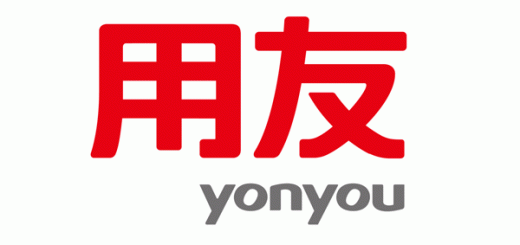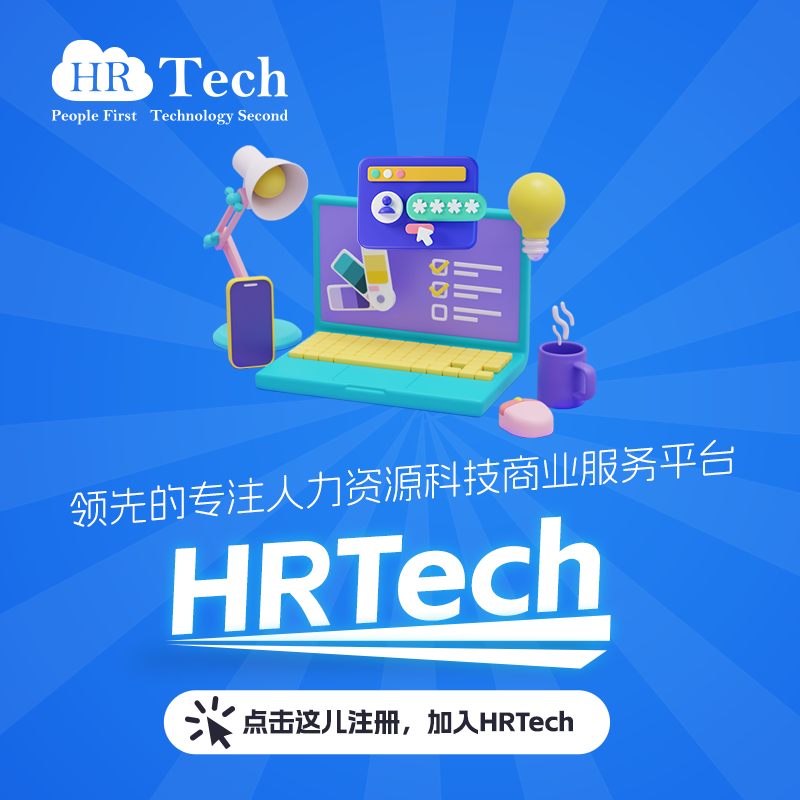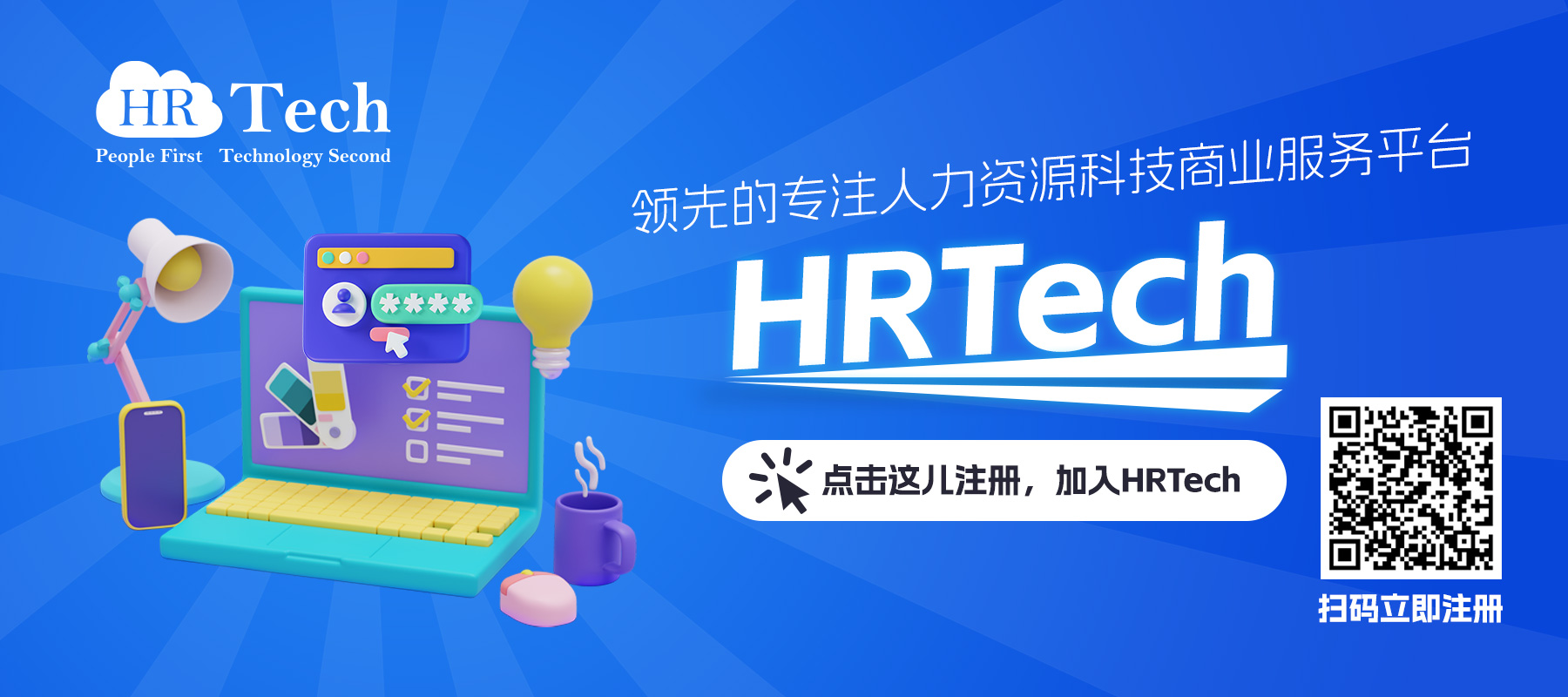资讯
改变企业社交媒体使用方式的五大趋势
杜克大学最近发表的一份关于社交媒体的研究令许多企业管理者挠头。该报告显示,许多企业的社交媒体支出约占企业营销预算的9%,预计未来五年内,这个比例将激增到25%。但半数受访的企业营销人员表示,他们根本无法证实社交媒体对他们的企业究竟产生了哪些影响。
很多批评人士认为,企业一窝蜂地在社交媒体上烧钱不过是在填一个无底洞。不过我认为,这些矛盾的数字却说明了另一个问题:社交网络正在以飞快的速度发展,同时企业也正不遗余力地跟上。虽然企业正在通过社交网络接触更多受众,也正在看到日益增加的好处,但持续变迁的社交媒体图景使得获得持续的成果,以及衡量这些成果,成为一个巨大的挑战。
2015年,社交媒体变革的步伐注定会进一步加快,但对于企业来说,现在与以往存在一个重大差异:主流社交媒体为了生钱,正在想方设法使企业能更轻松、同时更富有成效地与消费者进行互动。同时,随着各种工具的不断涌现,追踪社交媒体支出的成效,甚至衡量每一条微博的收益,也会变得更加简单。
简言之,2015年是企业利用社交媒体的成效更容易显现,也更不容易被忽视的一年。现在就让我们透过“水晶球”,看看明年的社交网络会给企业带来什么。
在Facebook上搞营销将花费企业更多的钱
你们公司的Facebook主页已经有了几千个粉丝,所以这意味着每次你更新内容的时候,都会有几千人看到,对不对?错!在Facebook专用算法的限制下,每条营销内容大概只会接触到一个品牌16%的粉丝。不过奥美公关公司的研究人员今年年初发表的一份报告显示,目前这个数字已经下降到6%左右,可能还会进一步下跌。该报告的作者马修•曼森认为:“Facebook等于是说,可能有一天,营销内容的‘自然触及人数’可能达到零。”
那为什么会发生这种情况?首先,用户的消息流中,涌入的内容只会越来越多,也就意味着每条营销内容被看到的概率也会越来越低。与此同时,Facebook还在鼓励企业使用它的付费社交广告,它所触及到的用户要比企业发布的普通内容多得多。这些所谓的“原生广告”就像普通的Facebook消息一样,会直接显示在用户的消息流中,而不是像传统的横幅广告一样显示在网页边缘。
这对2015年的企业意味着什么?这意味着,要想在Facebook上做好“微营销”,企业可能要在付费社交广告上砸双份的钱。与此同时,企业还会把鸡蛋往其它的篮子里放几个,比如Twitter、Instagram甚至是中国的微信等等。这种广撒网的方法虽然对Facebook的未来发展不利,但对于企业来说不失为触及不同人口群体的好办法。
如果“微营销”真能促进销量,我们还会看到更多的工具
在Twitter或Facebook上有几千个数丝,或者在Instagram上收集几万个“赞”来秀一下虚荣心,的确不是很难的事。但它们如何转变成销量和收入?一直到现在为止,这个问题很大程度上都被规避掉了,企业在社交媒体上砸了那么多钱,只是基于“曝光度”和“注意力份额”等空泛的术语。
但是这种情况也正在迅速改变。很多新工具正在涌现,它们给社交媒体营销流程带来的精确性,就犹如上一代衡量工具之于网络销售流程。首先,有一些分析工具已经能够指出哪家社交媒体最能吸引流量和点击率(比如我们公司使用的uberVuTool),并且会记住你正在发送哪类内容(文字、图片还是视频),以及你的目标群体是谁。这些应用可以自动规划消息的发送时间,使它们在一天中最佳的时间发送出去。同时它们不仅可以报告有多少人阅读了你发送的内容,还可以反馈这些读者的相对影响力。
将这些工具与GoogleAnalytics和Nimble等社交客户关系管理软件(它可以记录客户在社交媒体的互动情况)结合在一起,企业就有可能追踪到,所有这些“微营销”的内容如何转变为企业网站的访问量,甚至可以追踪到有多少人联系销售人员,或者直接通过网购渠道购买。最后,我们就可以明白一条特定的微博可以产生多少实际的销量,带来多少真金白银,而不是想当然地猜测。
社交网络将与商业联系得更紧密
今年11月,Snapchat公司推出了一款叫做Snapcash的产品,由此成为北美第一家允许用户通过消息向其他用户转账的主流社交网络。该服务使用的是借记卡信息,而且至少目前为止还是免费的。一旦它存储了你的信息,你就无需再次输入,只需要在手机上点点划划,就可以把钱轻松地从一个账户转到另一个账户。
随着移动支付大战的升级,其他社交网络可能很快也会如法炮制。事实上,今年10月的黑客事件显示,Facebook已经悄悄地在其备受欢迎的Messenger应用程序上嵌入了一个隐藏的支付功能。如果该公司将其激活,该应用的5亿用户就能互相转账了。
不过,这种点对点支付还只是一个开始。预测这种功能即将向商家付款开放,并不需要很大的直觉跳跃。这反过来将为社交媒体潜入电子商务世界铺平道路。打个比方,零售商可以以推文或微博的方式发送特定产品的信息,而消费者只需在手机上点一两下就完成了整个网购流程。实际上这种社交媒体与电商的“合体”已经发生了——目前Facebook和Twitter已经开始对“购买”键进行beta测试。
另外,对于商家来说,通过社交媒体接受低成本甚至零成本的转账,比接受信用卡支付更有诱惑力,因为信用卡支付每笔都要收取2%至4%的手续费。随着社交网络开始参与越来越多的金融交易,用不了几年,Facebook和其他社交平台有可能会推出比传统的信用卡体系更廉价易用的交易系统。
客户服务:社交媒体与手机齐上阵
航空、互联网、有线电视以及许多其他行业都表示,把客户服务搬上社交媒体后,给他们带来了显著的效益。消费者的满意度之所以会增加,是由于社交媒体的客服体验更加人性化,同时也比“800服务电话”或通过电子邮件联系更加方便快捷。由于对话基本上都是公开的,因此有合理的理由发牢骚的顾客往往会获得更好的待遇,同时企业如果处理得当,也会很快在社交网络上得到认可。
但这些好处也可能成为负担。很多客户信息非常敏感,不能在社交媒体上公开讨论。另外有些问题比较复杂,很难在140个单词的微博里完全解决。当然,也不是每家公司都想把不体面的事情公诸于世。不过,一些新的产品正在整合电话服务和社交媒体服务的长处,同时还能减少潜在的负面影响。
明年有可能出现的一个新功能,就是所谓的“推文回电”链接。比如一个顾客通过Twitter反映了一个棘手的问题,一家公司就可以发送一条单独的链接。点开该链接,用户会得到一个单独的电话号码,可以直接联系到能够解决问题的某一位服务代表。一旦通话结束,该号码就会失效。
通过这种办法,用户既能享受社交媒体带来的快捷的响应时间,又能享受到传统电话服务的隐私与全面性。另外企业可以继续提供独立的电话服务,以解决那些通过低成本的社交渠道无法有效解决的特定问题。
最大的社交媒体创新或从“后门”而来
云计算改变了软件和技术(包括社交媒体)进入企业的方式。过去一切都是IT总监说了算,但是现在,所有部门的员工都在积极寻找能让他们的工作做得更好的应用和服务。很多应用使用的免费增值模式使用户可以免费使用一些应用或服务的基本版,也使用户能更容易地试用新产品。这些云工具一般更加直观也更易用,就像Facebook和其他消费型应用一样(这种趋势又被叫做IT的“消费化”)。
所有这些趋势意味着,虽然很难预测明年哪些应用会真正大红大紫,但是下一波重大的社交媒体创新,可能已经在你的公司里悄然酝酿。正如现在已经非常普及的效率社交应用Yammer(用于内部社交)、Dropbox(用于文件分享)和谷歌的Hangouts(用于电话会议)等应用首先在一线员工中流行起来一样,下一波更好的社交媒体工具也会从企业的底层先火起来。
想看看你的公司以后会用哪种社交媒体吗?不妨找一个刚进公司的新人(有19岁左右的实习生更好),把她的笔记本电脑或手机借来,看看她正在使用哪些应用。
via:财富中文网
资讯
2015科技大猜想;企业云及应用依然是热门,但安全更重要
2015的科技大猜想
尽管存在很多艰难的选择和挑战,但是我对未来一年仍是充满希望。参照 2014 年的方向,我对 2015 年做出了以下预测:
1.企业云将普及到每个人
2.Email不会死,但是会被人们冷落,附件将会被摒弃
3.办公不再局限于传统的工作产品和工作流程
4.平板电脑将再创新高
5.移动设备管理(MDM)将爆发式增长
6.混合云的投入产出比(ROI)不佳,而且情况错综复杂
7.跨平台依旧遥不可及
8.企业平台面临安全漏洞的威胁
具体嘛,我们可以展开来聊一下:
1.企业云将普及到每一个人
继续用内部设施还是转用云服务将不再是一个争论点,因为实用主义者会发现,不管是传统的“内部部署”设施,还是托管的内部部署软件,都不足以快速地创新,不再能够连接各类现存的服务。云架构则不同,新软件需要转向云端才能受益,而妨碍企业转变或为传统企业寻求插件式替代方案的努力都显得苍白无力。业务领导者和员工对移动访问、跨产品整合、跨企业协作和云架构的内在灵活性有着十分强烈的需求,再加上安全方面的因素,就构成了企业级云端在 2015 年得到充分普及的最大动因。
就目前而言,企业级云端平台的在 2015 年面临的最大的机遇和挑战,就在于该平台需要为企业级用户提供一键式登陆、专属域名服务以及无缝的系统切换体验等。
2.电子邮件不会死,但是会被人们冷落,附件将被摒弃
电子邮件不知道被唱衰了多少次,许多人都觉得它应该淡出历史舞台,不过事实上它仍未走远,只是在大幅度改善其使用方式而已。通讯类的服务和应用势头已盖过电子邮件,但并没有占据主要地位,因为文本信息还是很重要的,但在新兴市场,Email 再无法达到它在发达市场一样的地位。
使用基于云的文档让企业组织能知道每个副本的位置而无需担心资产扩散,用户在移动设备上能够使用更加安全的阅读器查阅、打印、标注文档而无需创建副本。给附件(或者邮件)创建本地副本或附件收件夹都存在有很大的安全隐忧,很多初创公司提供了创新的可扩展解决方案,且目前能够基于云解决方案进行部署。比如DocSend能够跟踪高价值文档的使用情况,Textio可以在不提取邮箱内容或者在共享文件中定位的情况下分析云端文档,Quip能够编辑文档和基础电子表格。
2014 年,投射技术(casting technologies)让文档链接能够通过云服务传送,就像现在的视频一样。领先企业已经迅速摒弃了管理海量附件和用电邮无休止协作的旧有模式,目前已经有了一些解决方案,但未来一年仍存在很大的发展空间。
3.办公不在局限于传统的工作产品和工作流程
静态信息和报告文档的工作流程逐渐过时,把文档或者 PPT 做得全面丰富的人不值一提,倒是那些能够一边在公司外参加电话会议,一边在平板电脑上获得答案反馈的人才称得上优秀。他们主要使用带有最新实时数据的云端工具,能够快速获取信息、快速分享。商业信息瞬息万变,所以他们深知内容本身比演示更加重要。
企业的机会在于后端,以及转向实时的云端解决方案,传统的拖延处理和繁重的 ETL(提取转换加载)模式也是该被弃用了。
4.平板电脑将再创新高
平板电脑更换周期长,又处在笔记本和手机之间的尴尬位置,所以不少人都认为 2014 年是平板电脑会有所衰退,但事实上,2014 年平板电脑销量已经超过笔记本。有人会说,廉价的 Android 平板电脑放在家里都不常用,但注意,在相似的情况下笔记本的使用次数也明显减少了。平板电脑在 2014 年的市场有多好,最为明显的就是 iPad 的普及,无论是咖啡厅、机场还是会议室,随处可见商务人士手持 iPad,用各种企业应用、电子邮件,以及浏览工具进行办公。
到了 2015 年,我想我们都期望看到新款 iPad 推出,它能够配有外置键盘来提高我们的办公效率。平板电脑不是仅通过外形、尺寸来定义的,还包括硬件平台(ARM)和现代化、移动化的操作系统(ARM 上的 iOS、Android、Windows Phone/Windows),同时还有其固有的安全性、可靠性、高性能、连接性、稳健性以及便携性等,当然这些属性还需要保持长久的稳定。
出于团队灵活性和组织安全性的考虑,未来人们将会率先在移动平台上工作,可以想象这样一个场景:我们主用配有键盘的大屏平板电脑,再以手机或者平板手机作为第二屏,就像苹果Continuity的功能那样,不过重要的是用户体验要好。
至于笔记本嘛,我认为它未来十年甚至在更长的时间也都能占据一席,只是会用来使用更专业的工具,比如用 Excel 做财务、用 Photoshop 做设计、用 AutoCAD 做工业制图等。
5.移动设备管理(DMD)将爆发式增长
在目前恶劣的 IT 环境下,要长期保持 PC 系统的统一性已经尤为困难,而且技术上的挑战也意味着 2015 年人们将会减少对 PC 的使用。就拿索尼被黑的事儿来说,你可以看到传统的 PC 架构有多么的不堪一击。改用平板电脑办公的情况增加是件好事,但随着时间的推移,任何广泛使用的设备都会成为成为被攻击的目标,移动设备也一样面临着被不法分子利用漏洞的风险。所幸目前行业还没找到合适的移动设备管理模式,哦不对,这貌似也不值得庆幸。
移动设备管理将在 2015 年创造很多机会,但条件是:首先,不能够让安全措施影响到设备的运行性能和续航时间;其次,不能让安全方面的考虑拖累了实用性——员工可不想同时用两台手机。
系统更为开放的 Android 平台显然会比 iOS 更好的兼容这类管理工具,但这样的高度自由也有潜在的安全威胁,同时也会对设备的性能等造成影响。相信到明年,企业管理的移动设备会迎来爆发式增长,尤其随着平板电脑进一步取代 PC 的地位,移动管理类的初创企业也将迎来自己的黄金时代。
6.混合云的投入产出比(ROI)不佳,而且情况错综复杂
在大变革时代,渴望采用“跨越鸿沟”式技术的实用主义者可能会选择那些衔接新旧技术的解决方案。就云计算而言,未来备受瞩目的两种方案就是:虚拟化原有数据中心与构建混合云。
根据历史数据,桥接解决方案(bridge solutions)是无论从短期还是长期来看都是最容易导致运行放缓,形成技术债务并降低 ROI 的方式。那么对于企业来说,最实用的方式就是在运行旧有基础设施的同时采用公有云。
7.跨平台依旧遥不可及
多年来一直困扰开发者的问题就是:到底是先为 Android 还是为 iOS 平台开发应用?在 2014 年初,有不少初创企业都转向“Android 为先”,但随着 Android L 和 iOS 8 的问世,可以明显看到这两系统之间的差异又进一步拉大,好嘛,平台战略的分歧越发明显,也让我进一步看到了跨平台的缺陷。要我说,跨平台必须是一笔赔本生意。除了异议处理程序,跨平台貌似从没有奏效过,即便如今,也几乎没有软件能够与原生平台保持一致的情况下,还能合理整合各个平台并且运行得同样好。
所以,在 2015 年来临之际,正确的做法显然是专注于适配平台的应用,以 iOS 为先,同时让并行团队同步处理 Android 应用。Android 的碎片化问题的确很严重,而且高度分化的低端手机用户基本都不会购买应用,因此,开发者应该专注于旗舰级的 Android 设备,如 Nexus、三星和摩托罗拉。
8.企业平台面临安全漏洞的威胁
2014 绝对称得上是“安全漏洞频发”的一年,包括 Target、eBay、JP 摩根、Home Depot、Nieman Marcus 和索尼这些知名企业的 IT 系统都成功被黑客入侵。因此,到 2015 年的时候,这些企业也该是好好想下该怎么应对安全漏洞了。
首先,最大的风险源于端点,端点几乎在任何的环境下都不堪一击,其次,预制化数据中心的基础设施也面临同样的限制,以上两点共同造成了企业安全漏洞的威胁。
到目前,我们已经看到了一些有望在 2015 年获得企业客户青睐的安全技术和工具出现,就端点而言,一个现代操作系统和应用的结合或许就能为我们提供更好的安全性。所以拭目以待吧,相信明年会有许多初创企业通过创新的、前瞻性的解决方案脱颖而出。
2015年值得关注的技术
这是一个移动与机会并存的时代,投身移动端和云为中心的公司或企业需要快速“跨越鸿沟“,抓住那难得的机会。到明年,将会有一些新技术亮相,或已开始崭露头角,那接下来就说说我将会关注的一些技术(尤其是明年 1 月 CES 国际消费电子展)。
1.Beacon
在一些人看来 Beacon 尚不成熟,目前也仍在寻找适用的领域,但我认为它很有可能会成为下一个”风口“。我曾研究过 Beacon,并鼓励有潜力的初创企业投身这一领域,因为我始终认为将地理位置数据和 Beacon 技术结合在一起,能够为企业带来无限的创新可能。
2.4K显示技术
对于像素而言,摩尔定律也同样适用。苹果在今年率先推出了 5K iMac,这也让 4K 显示器的价格下降到数百美元。在 2015 年,移动设备的显示分辨率继续提高(前提是不损耗电池续航和性能表现),而桌面显示器尺寸也会进一步加大。与此同时,我也希望巨屏设备、无线收发器、触控技术能够催生协同工作、教育等领域的创新。
3.平板电脑外设键盘
我对这项技术深信不疑,在 2015 年,我由衷希望能看到平板电脑、外设键盘和移动操作系统强化后能够很好结合。当你开发平板电脑应用时,我强烈建议你能够使用外设键盘进行测试。
到明年年底,翻盖式笔记本搭载移动操作系统将成为常态,“平板电脑模式”与“笔记本模式”的切换并不是影响办公的关键,尤其是对大尺寸设备来说;实体按键将会定义翻盖式设备,创新的触控保护套有望让小尺寸平板电脑重放异彩。
4.移动支付
苹果在 2014 年上线Apple Pay,可谓对整个支付领域都产生了巨大影响。移动支付的功能和使用日趋完善,支付行业的变革或许会比我们想象中更早的到来。移动支付取代传统银行业、信用卡和货币仅仅是时间问题,且由于发达国家完善的基础设施可能成为限制,发展中国家反倒更有可能走在支付和银行领域的前沿。
5.API
云服务最有趣的特色在于 API 的提供和消费方式。各项云服务提供的 API 都易于采用,现在 API 的运作就像是开发定制应用那样,需要做出解决方案的时间大大减少,与其它服务的整合更简单直接。
6.机器学习(ML)服务
人工智能出现至少五年了,近年来的发展也有了显著变化。现在我们将机器学习看做一项服务,甚至也从 IBM 获取这项云服务。轻松获取大型语料库与高效运行云服务器训练数据的能力是云级别服务器天然的优势所在,各种各样的产品都可能被打上“机器学习”的标签,但真正能取胜的往往是那些充分利用机器学习服务,给用户创造价值的产品。
7.按需服务
按需服务正重新定义我们的经济,它和当日送达服务都将办事效率提升到了新的高度,同时也减少了交通流量、污染、拥堵等,只要你亲身体验了,你应该就会开始思考经营店面和供应链带来的成本有多大。与其说按需服务是一种奢侈,我更认可它带来的是高效。
看着吧,2015 年每个人都将获得飞跃式的发展,无论你在咖啡厅还是在办公室工作,业界将形成新的形态,在新的服务、新的方式和新的平台基础上开展工作。
[本文编译自:recode.net]
资讯
“用友软件”成绝唱 更名后的用友将往哪里走?
网上流传一句笑话,圣诞老人在中国境内摔倒了,至今仍在雪地里趴着,今年圣诞节取消,可是软件业内的圣诞节并没有因为“圣诞老人不能来”而取消,而是带来让所有人震惊的消息。用友软件改名了,以后用友软件更名用友网络,用友软件将写进历史,一个的新时代的代表应运而生。
12月24日,用友软件股份有限公司发布2014年第十次会议决议公告,为进一步加强公司企业互联网与互联网金融业务的发展,加快公司的战略转型,公司拟将公司名称“用友软件股份有限公司”变更为“用友网络科技股份有限公司”,在公司名称完成变更登记手续后,公司拟向上海证券交易所申请将公司证券简称“用友软件”变更为“用友网络”。
回首用友这么多年,用友一直在变化中前行,从财务软件到用友ERP,到用友软件,以及今天的用友网络,一路走来用友一直在变化求变。况且用友向来有更名的习惯,此前就有几次更换品牌标识, 2012年用友软件收购“yonyou。com”域名,并将yonyou作为用友软件的英文标识,替代了此前一直使用的UFIDA。这也是用友软件发展历史上的第二次换标。2005年4月,用友软件将曾公司的英文名称由“UFsoft”正式更换为“UFIDA”,当时用友软件董事长王文京表示,其目的是加快国际化步伐。
而更换Yonyou后 ,用友是为了配合用友软件的最新的云战略。用友誓要 “成为亚洲最大、全球领先的企业云服务提供商”的战略目标,并全面转向云计算。
用友的每一次更名都会重大的决策走向,同时也意味着用友又一个全新时代的开启,用友此次将“用友软件”更名为“用友网络”,正如用友内部所言是为顺应当前互联网时代的发展需求,实现从真正意义上的软件公司变成一家互联网公司,以前我们都说软件定义一切,现在看来应该叫网络定义一切。
那么此次用友更名弱化软件强化网络,用友的业务将如何支持此次更名落地呢?
有用友员工表示:一夜之间,我们就从软件骨干摇身一变成为互联网精英,至此,用友全面进军互联网就差待遇互联网话一步之遥。不过相信用友员工的梦想会最终照进现实。
不过以 作者猜测,用友此次更名未来将会有几大变革:
第一, 强化自已互联网公司地位,也可以看出用友转型的决心。另外,翻看用友近期HR招聘公告,用友准备扩编招纳网络人才,所以用友的员工的薪质水平会向互联网公司看齐。用友员工的期盼应验了。
第二, 用友NC很可能会像用友优普一样进行剥离成立公司,实现软件公司和网络公司的区隔,至于会不会独立上市,这些还真不好说,畅捷通上市的成功证明一切都有可能。
第三, 用友网络必将融合一些网络元素的公司进来,所以用友未来会加大在网络公司和网络领域的收购,用友未来几年的扩张也会从行业解决方案向网络属性更浓的公司渗透。
第四, 用友很可能会吸纳互联网公司的资本,实现公司内部基因突变,有人说用友转型不是缺少互联网思维,而是缺少互联网基因,就像360周鸿祎所言,传统公司要想全面向互联网转型,要么靠自身慢慢进化,但是需要时间,可能不一定进化完成就死在转型的路上,要么就是收购互联网团队和互联网疯子,进行企业内部的基因突变。其实也可以让互联网公司加入用友,实现真正意义的软件公司互联网化运营,所以不排除用友下一步向互联网公司靠拢的可能。
第五, 用友软件变成了用友网络,一家软件公司彻底变革为了一家互联网公司。
也从另一方面表明,管理软件这几年在转型变革的路上焦虑和苦心,前有金蝶砸服务器扔电脑进行痛彻心痱的进行入互联网时代,后有用友更名实现全方位转型,无论如何变我们都不能否认传统管理软件已乘火箭加速进入网络时代的事实。我们期待国内的管理软件厂商在互联网浪潮中再创当年神话。
来源:人称T客
资讯
可穿戴设备新爆发点:入侵企业员工工作市场
一项新技术或新产品的投入使用通常会带来一系列的影响,可穿戴设备的普及对员工们正常的生产生活带来诸多便利和不可思议之处,但同时也会对员工的隐私和一些机密文件构成一定的影响。如何正确对待可穿戴设备这把双刃剑是很多公司都需要考虑的问题。
可穿戴设备已经像冰雹一样冲击着当今市场。从手表到眼镜,从帽子到皮带,各种各样的芯片和传感器被集成在我们的衣服与装饰品上,这类型的产品市场在短期内似乎没有减缓的迹象。事实上,据IDTechEx透露,预计在2024年可穿戴设备的市场份额将超过700亿美元。
从等待上市的Apple Watch来看,这款产品预计会在2015年年初进入市场,可穿戴设备在人们的工作场所变得无处不在,特别是那些以创新和改变闻名的大型科技公司,已经是很常见的产品了。
但是对一些人来说,可穿戴设备在某些方面能够非常显著的提高一些公司的工作流和工作效率,通过这些可穿戴设备所收集到的数据,员工对于工作的洞察力将会达到一个新的高度。对另外一群人来说,随着这些不可避免的可穿戴设备的入侵,将意味着我们将被迫接受这些设备所带来的“噩梦”,以及一些安全隐患、未知的政策和一些新的规程。
可穿戴设备在劳动力领域重新定义大数据
可穿戴设备为收集员工们的日常工作大量的数据提供了机会,收集这些数据然后通过预测分析,对员工们有很大的好处。
员工们看到了可穿戴设备确实是一个非常好的机会。据普华永道对1000名美国成年人的一项研究中指出,77%的受访者认为可穿戴技术的好处是它本身所存在的潜力,它能使员工们更有效率以及更有生产能力地投入到工作中。另外,46%的受访者说他们所在的公司应该为员工在可穿戴设备上投一笔资金。
由可穿戴设备所收集到的有效信息,通过一定的组织整理后能够在一定程度上提高生产率并且提到员工的敬业程度,甚至能够降低虚假病假员工的数量。但是这些数据在某些情况下破坏了现有的福利和奖励机制。可穿戴设备能够允许员工们在外四处奔波的时候,不用考虑赶回总部参加一个会议,组织能够实时整理收集到的信息,然后体现出这些数据的真实价值。
举个例子,可穿戴设备可以允许老板们随时了解员工们一天的时间里究竟干了些什么,能够取得指定的某一时间的图像,然后就能迅速识别分析出效率低下的员工。根据员工的喜好和习惯,这些信息可以对公司的投资回报率以及寻找提高员工敬业度的方法等方面有着巨大的影响。
通过可穿戴设备实时观察和分析,这一模式甚至可以渗透到员工刚入职时的流程。通过预加载到可穿戴设备中的培训手册,能够帮助员工们更好的融入公司。考虑到很多科技巨头之间的竞争,面对吸引和留住顶尖人才的挑战,确保雇主和员工之间的和谐关系,如何有效的留住员工,这些方面还有很长的路要走。
使用这些技术进一步强调了新的健康计划,这些已经成为可穿戴设备领域常见的主题。可穿戴设备的健康管理功能,从Fitbit到Samsung Gear,都能够允许雇主了解雇员的一些个人习惯,这些都是之前没有的。
我们已经看过一些关于健康的方案,最常见的就是关注身体的一些指标,管理和减肥。有一些设备甚至还能跟踪员工在办公桌前的坐姿是否正确。可以这样想象一下,有一块可穿戴设备,能够根据员工的实际情况建议他爬楼梯而不是坐电梯。又或者是吃一顿健康的午餐而不是垃圾食品。如果员工做出了正确的选择,他们就会得到一些相应的奖励。
一个反复无常的“自带设备”噩梦?
就像任何新技术在被刚采用时,总会伴随着一些安全和隐私的问题。可穿戴设备好像使得这一问题变得更加复杂。根据前面所提到的普华永道的调查,82%的受访者担心可穿戴设备会侵犯自己的隐私,同时66%的人认为可穿戴设备会使他们更容易遭受数据安全漏洞的威胁。如果你不小心丢失了你的智能手机或者平板电脑,里面的信息可以很容易的被抹掉或者利用。可穿戴设备会提供同样的功能吗?
可穿戴设备挖掘的是一些最个人化的、最敏感的信息,正是由于这些信息的特殊性,也会让他们成为一个黑客攻击的简单目标。当设备连接到工作以外的未加密的无线网络或者在不安全的网络环境下操作,会让员工的可穿戴设备非常容易遭到影响。使用非常简单的数据共享功能,有些敏感的商业信息就有可能会落入一些别有用心的不法之徒手中。
随着越来越多的员工在工作中使用自己的个人可穿戴设备,保持信息安全成为了许多潜在威胁中的一个艰巨的任务。
尽管引进新技术的时候都是令人头痛的,但可穿戴设备不可避免的会在日常商业活动中发挥着越来越重要的作用。实现一种创新、现代的科技,以提升员工在一个科技公司的经验,但是他们在使用这些设备和技术之前将要了解新的隐私策略和一些必要的安全指导。
勇敢的美丽新世界
通过可穿戴设备所统计的数据,使得我们更准确的了解员工情况。在正确使用这些设备的情况下,采取适当的安全措施,这些可穿戴设备可以提高整体的工作效率,提高员工的参与度,使员工们发挥出他们最大的生产力。
Source:TC
资讯
别再用互联网思维装神弄鬼了!值得深思!
今年,一股声音不绝于耳——互联网思维,这个听上去有道理的道理像瘟疫一样快速传播,成为鼓励创业者和转型者前进的动力。一时间,雷军的名字每天都出现在朋友圈里,关于“专注、极致、口碑、快”四个创业秘诀被奉为经典。今天,在2014这个创业浪潮汹涌的年尾,我实在忍无可忍必须写下这篇日记,表达我的态度,对这个烂大街的命题提出质疑。
互联网思维的意思就是快速致富思维
从来没有像今天我们所处的这个时代更欢呼雀跃的,好像一夜之间,互联网思维蔓延起来,像病毒。模仿起家的手机,难吃的煎饼,蒙着苦脸卖牛腩,被捧上天做课程表的90后,卖情怀的锤子,身边的每一个人都在谈创业,谈垂直产品,谈颠覆,谈融资,谈互联网思维,谈极致,好像世界一下子变得血肉模糊,人们集体跪舔大V,膜拜90后,琢磨着改变世界。一个朋友说的好,互联网思维的意思就是快速致富思维。我身边那些坚守着做设计的人们都开始怀疑自己,坚守了十年的东西突然一下子变的可疑起来,于是他们开始想着另谋出路,都尝试着或者谈论着,试图找到一个一夜暴富的商业模式;一个不知道如何创造价值的、看不到未来的产品;一个移动互联网的入口;一个会颠覆BAT的、会颠覆所有人生活方式的、会重新定义这个世界的牛逼产品。他们有一个共同特征——都自居为乔布斯,都像是从硅谷跑过来的嬉皮士。他们认为乔布斯是颠覆性创新,其实也许人们忘了苹果公司从七十年代开始,期间经历多少次挫折,完成了真正的积累性创新。在我们这里,一个靠模仿起家的手机品牌成了偶像,如果说靠模仿起家并不可耻,但也没必要被捧上神坛,那些根本不用小米手机的人也在推崇小米的理念,这不是媒体的喉舌是什么。三星从来不提概念,不讲故事,不炒作老板自己,扎扎实实做产品,怎么没人挂在嘴上呢?因为三星的扎实学不来。
移动互联只是一百年来的第三次技术变革
移动互联只是一百年来的第三次技术变革,我们都知道,是技术在驱动世界的前进(可悲的是,艺术、文学、哲学早就停滞不前了,技术和艺术似乎是一个悖论,当我们手捧着那个手机的时候,哪有心思再去想哲学、文学或者是深刻的艺术)。第一次的变革是汽车的出现,公路作为基础设施的铺设,彻底完成了第一次变革,汽车只是作为工具,改变了人们的生活方式,以福特汽车的崛起为代表;第二次变革出现在七十年代的计算机时代,计算机伴随着软件巨头的崛起,以IBM和微软的崛起为代表;毫无疑问第三次变革就是我们处的这个时代,也就是移动互联网时代,我们处在移动互联的基础设施铺设和移动终端入口的争夺阶段,然后掀起了一波又一波创业的浪潮,以苹果和谷歌的崛起为代表。世界五百强的领头羊也随着这几次变革而更迭位置。
我们长期活在一个信息不对称的商业世界里
移动互联网没什么可怕的,也没什么神秘的,更不必拿来炫耀,总结被归类的关键几条:一是互联网作为工具可以更好的了解和挖掘信息,与他人分享和沟通。二是互联网依然改变不了商业本质,即产品差异和消费者体验。三是去中心化,信息碎片化和快速更迭。四是消费者的生活方式在发生变化,这个不足为奇。
我们长期活在一个信息不对称的商业世界里,被糊弄惯了,突然出现了透明开放的比对方式,砍掉了中间的流通环节,降低了成本,这些一下子让人们乐屁颠儿了,其实,这些本就该属于消费者的。互联网常说的一句话就是,互联网让世界更开放,更平等,这句话的意思就是草根终于有了舞台了,于是乎,诞生了自嘲的屌丝,屌丝就是自我降格,自我否定,自我瓦解;也诞生了段子手、推手和写手,更重要的是诞生了社交网站,这时候又有人站出来嚷嚷了,脸谱网是一个垂直网站,一个产品击中人们痛点,但人们忘了,社交是人类的天性,从未改变过,从原始社会,到四合院,再到今天的社交网站,一直没变,被颠覆的只是方式,不远的明天,社交方式依然会被颠覆掉,因为人们渴望表达和扯犊子,仅此而已。如果说移动互联是工具,那么学会利用新工具只是学习能力的问题,不是创造力问题,关于这条,很多没有创造力的总是混淆概念,更不要上升到颠覆、创新和重新定义的层面。这个世界从未被重新定义过,人们的基本生活依然是那样,难受了会哭,开心了会笑,这就是人的天性。不管如何垂直进入你的生活、进入你的大脑或者进入你的身体,所谓巨头们不都说要实现闭环生态链吗?也就是一个看上去垄断的盈利模式。
德国人从来不谈互联网思维,也不谈追求极致
我十三年前开始创办设计公司,当时,国内很少有人提及设计,多数为广告公司,港台和国外有一些设计公司在国内常常被提及,我们那会儿多数说的还是奥格威的广告学,这也反映出那个时代的特征,四大媒体垄断,以媒体代理为核心的广告业务是咨询行业的主流,也说明商业世界相对于今天比较简单,企业从造产品、建渠道、做营销、打广告,三下五除二,一个几十年没变的商业定律,在这期间,定位学曾经风光一时,但这多数说的是产品定位和广告传播,企业粗线条做事,也能获得利润,比如脑白金,这都是由于信息不对称导致,消费者能够选择的机会少、渠道少、方式少。移动互联网带来的传播层面的变化就是碎片化,将过去整块整块的传播方式打散了。我们2002年开始做设计公司是精细化思维的开始,如果说今天的互联网思维所谓的极致,在我们这里早就开始了,精细化和全方位设计取代粗线条,无论是个人还是品牌不都是如此吗?任何一个学设计的都知道,从追求极致过渡到习惯就是品质的过程,在设计师眼里,极致不是追求,而是习惯,基本动作而已,只有那些一下子被冲击到的人,才哭着喊着追求极致。德国人从来不谈互联网思维,也不谈追求极致。极致只是对结果的描述。
忽悠改叫互联网思维,搅局的改叫颠覆性创新
我吃过一次雕爷牛腩,发誓再不去,不好吃、哗众取宠、不扎实。我们都知道人心是看得见的,品牌的心也能看见,我们做品牌从过去偶然性变成必然性,塑造品牌由内而外,科学和创造性兼具,而这正是推崇互联网思维(快速致富思维)不赞同的,他们善于造浪,也就是善于利用手中的话筒(话语权)制造声浪,他们颠覆百年品牌,颠覆传统行业,颠覆人们的思维,唯一的原因就是要推动这股浪,让资本看见、晒数字、吸引眼球。昨天看见前同事飞虎发的微信“八卦小报改叫自媒体,忽悠改叫互联网思维,做耳机的改叫可穿戴设备,办公室出租改叫孵化器,搅局的改叫颠覆性创新,这些都要学会两点:一要学会造概念,二要学会讲故事”。问题是这种思维和另外一种思维的对抗只是一种营销方式而已,我们都知道站在巨人的对立面更容易确定自己的价值,小米聪明的和格力打赌,其实是在鼓惑粉丝他们站在了传统企业的对面,来塑造颠覆者的形象,阿里站在万达的对面,来塑造颠覆者的形象。然后粉丝们就疯了,动员所谓粉丝参与的不只是产品设计,还有摇旗呐喊。
我们是设计公司,加班的次数多,上半年世贸天阶进了一家黄太吉,我们吃了一阵,再也不吃了,真受不了了,难吃,同事评价:一是吃了差点噎死,二是早上弄那么大个煎饼干嘛啊?——这就是极致吗?极致就是服务员戴面具?极致就是上五杯不同的茶水(喝完闹肚子)?极致就是开着宝马送餐?好吧,有人说,互联网思维的核心是传播,那么传播完了呢?是不是要扎扎实实做产品,做服务?
让我难以理解的是,一些推崇互联网思维的人已经开始撒娇、故作偏执狂和不讲道理,把吵架当成创造力和颠覆的表现,他们认为表面上摆出一副嬉皮士特征,说话间对传统企业表现出不敬和瞧不上,满嘴都是市值,都是一轮又一轮的融资,始终听不见关于“人”的事情。喜欢90后总裁的不是90后,好像那种感觉就是颠覆,就是对自己的最好证明,贴上了颠覆者的标签。
移动互联网给人们带来方便,激发欲望
我喜欢我们的一个客户新侬,他们提出利用互联网,做现代农业,为消费者提供安全食材,他们不断强调,不要做过度设计,把利润让给消费者,为顾客提供好服务。我做了13年设计公司,为很多企业提供过各类设计,总结起来,一个创业者首先是一个有良心有梦想的人,创业者的人品和价值观决定了企业的良心,这个才是一切的驱动器。
无论我们使用的是锄头还是开着汽车,亦或是手里端着手机,我们始终作为一个人活在这个世界上,人始终是与天地万物联系在一起的,互联正在以新的方式连接人,连接一切,我们要重新认识我们自己,尊重自然规律,尊重人类的基本情感。想起米兰昆德拉的一句话:“当你站在人群里的时候,你才会成为你自己”,这不就是移动互联网做的事情吗?
有多少种个性的人,才会有多少种个性的作品
我们所处的世界应该是多元的,人们应该独立思考,拥有个性,每个人应该作为一个人存在,而不是作为一个群体,一群人跟风。我想互联网思维之所以诱人也许是因为后面都跟着一串数字,一亿或者八百亿,说到底还是成功学在作怪,互联网思维到底还是快速致富思维。
用山本耀司的一句话收尾:“我最讨厌的就是那些看似伟大的人或事”。
来源:iDoNews
资讯
杂谈|大数据将如何改变我们的学习?
维克托·迈尔被誉为“大数据时代的预言家”。现任牛津大学网络学院互联网研究所治理与监管专业教授。主要研究领域为数据科学、信息安全、信息政策与战略。曾任哈佛大学肯尼迪政府管理学院信息监管科研项目负责人、哈佛国家电子商务研究中心网络监管项目负责人、新加坡国立大学信息政策研究中心主任。曾参与欧盟互联网官方政策制定。先后担任过微软、惠普、IBM 等全球知名企业和机构的信息政策顾问。所著《大数据时代》、《删除》,皆被认为是最早洞见大数据时代趋势的开创性作品。
(下文根据演讲现场速记整理,有删节)
很多人都知道,我是一名数据科学研究者。那么,为什么我今天要来到这里,给大家讲有关学习和教育的问题呢?因为我认为,学习的未来、教育的未来都是和我现在所做的工作相关的。也就是说,当我和那些正在学习的人以及研究教育的人坐在一起,可以一起思考如何通过大数据来改变我们的学习方式。这样,我们或许就可以改进我们的教学,可以让教育变得更好。
这里所说的教育,不只是对那些优秀的人而言,而是对所有的人。我有一个观点,也是我的理想,那就是,所有人都应该获得配得上他的潜力的学习机会,学习怎样获得知识和洞见。我目前想做的,正是如何尽可能地帮助每个人学得更好。而在我看来,利用大数据,我们是可以在这个问题上获得新进展的。这就是我今天要讲的基本观点。
两种完全不同的教学方式
人们都赞美Mooc,认为它可以让全世界获得学习的机会。但是,Mooc的意义不仅仅在于此。还在于,通过它,可以获得大量关于人们如何学习的数据:人们怎样获得知识?怎样获得洞见?而通过理解并且进一步考察这些数据,我们可以更好地理解人类的学习行为,进而提高人们的学习效率和学习质量。
几年前,我曾访问过不丹。那是在中国和印度之间的喜马拉雅山脉东段南坡上一个非常美丽的国家。近年来,不丹在世界上因“幸福指数最高”而闻名。不丹在商业上有很不错的发展。其中,当地高超的唐卡描画技艺给很多前往不丹的人留下非常深刻的印象。
在不丹时,我访问了一所学校。这所学校正是教授关于唐卡的绘画技艺的。参观时,不仅是非常漂亮精致的唐卡图像给我留下深刻印象,学生们非常专注地描绘唐卡的状态更是令我目瞪口呆。最令我感到震撼的是,他们竟然可以做到与他们的老师所做的一模一样。而他们的老师又和他们上一代的老师、画家做得一模一样。也就是说,几千年过去了,他们描画的唐卡是完全一样的。
那么,教育对他们来讲,就是学习如何模仿过去,说得更具体一点,就是如何完全地模仿过去。从中延伸出的一个观点就是,最好的学生就是不偏离的学生; 和过往的优秀画家所做的一模一样的,才是最好的学生。我看到这些作品时真是非常惊叹。我对由他们的作品和创作、传承的整个过程所折射出的巨大的精确感,感到非常吃惊。他们所强调的,只是模仿,而不是你自己的思想,不是创造,不是原创,不是创新。
而在差不多的时间,我又遇到了另一个人。他叫吴恩达,现在是斯坦福大学的教授、一个计算机科学家。他在智能机器研究领域颇有成就。吴恩达和另一个合作伙伴达芙妮·科勒一起开创了一家公司。这家公司表面上和人工智能没有什么关系,但由这家公司开发出的在线学习平台“Coursera”已经成为当下最具代表性的在线学习平台之一,提供免费的网络公开课程。
这家公司的缘起就是由吴恩达讲授的“机器学习”课程被以免费的方式放到了网上。最后意外地发现,报名人数竟超过了10万人。而通常,吴教授平均每年的听课人数是400人,必须连上250年课才能接触到10万名学生。换言之,通过这个在线教育平台,这门课程可以抵达的学生比吴恩达以往一生可能教到的学生都多。而如今,他通过一个在线课程就教完了。正是因为这个经历,使得达芙妮·科勒和吴恩达后来一起合作,创建了Coursera(意为“课程的时代”)这个在线学习平台。这个平台的理念是,它可以提供在线教育材料给全世界的人。
当然,现如今,经过数年的发展,随着在线教育得到越来越多人的关注,在线的课程越来越多,Coursera已经只是其中的冰山一角了。这一波在线课程及其背后的在线学习体系被称为“大规模开放式在线课程”,即Mooc(massive open online courses)。人们都赞美它,认为它可以让全世界获得学习的机会。
但是,我想这种关于Mooc的观念是完全错误的。Mooc的意义不仅仅在于让全世界的人获得更多的学习机会,还在于,通过它,可以获得大量关于人们如何学习的数据:人们怎样获得知识?怎样获得洞见?而通过理解并且进一步考察这些数据,我们可以更好地理解人类的学习行为,进而提高人们的学习效率和学习质量。
在线教育最根本的未来在于它将改变我们如何学习。这关乎学习和教育的未来。正是基于这一点,我认为,正进入教育的方方面面的大数据,将对全世界的学习与教育活动产生极为深远的影响。
大数据如何重塑学习
大数据可以收集足够多的信息,且覆盖面广泛。我们在制作和利用大数据时,需要用个性化的方法把它们组织起来,将其运用于教育领域,进而帮助我们以前所未有的视角判断什么可行、什么不可行;展示那些以前不可能观察到的学习层面,实现学生学业表现的提升;基于学生的需求而非统一的课程标准来定制个性化课堂,促进理解并提高成绩。
现在让我们想几秒钟,人们到底是怎么学习的?
200多年以来,学习一直是学校体系的一部分。但其实在此之前,还没有现代意义上的学校或者大学,教育基本上是以个人形态存在的。一些富人家的孩子会获得一个一对一的导师,但这样的教育只有少数人才可以享有。现在教育是由普通大众来获得,这无论如何都是一个好事,是前进的一大步。但是,目前的这种情况还是不够的。
为什么这么说呢?因为,作为学生,其实我们每一个人都有自己独特的个性、需求和学习上的倾向。但是,目前我们这个教育系统还没有办法支持这个个性。如何才可以改变、完善这个系统?就是要通过对数据的收集和利用。如今一些技术上的进展已经为有关数据的大规模收集和利用创造了条件。在我看来,大数据正是可以从这个意义上重塑学习的三个主要特征,即反馈、个性化和概率预测。
说到这里,我想举多邻国(Duolingo)的例子。它的主体是一个语言学习网站,同时提供网页版和手机应用版。多邻国也是由一位计算机科学系的教授创建的,他叫路易斯·冯·安。多邻国是免费的。通过下载它提供的应用程序,你就可以在手机上学习国外的语言,非常有意思,使用起来也非常轻松。现在已经有成千上万的人用这个应用程序来学习语言。
多邻国的贡献在于,它是一套数据导向式的教学方式。无论用户是花几分钟还是几个小时在手机上用这个应用程序学习,他们都可以通过后台程序来跟踪收集大家学习语言的数据。通过学生在应用程序上回答一个个问题,系统和多邻国的团队会分析用户一般会纠结于哪些问题,会犯哪些错误。通过分析使用者的互动数据,分析他们的学习方式,从而再反过来,用这些积累下来的数据去改进整个应用程序。路易斯·冯·安曾说,其实他们对于到底如何学习外语所知不多,但是他们可以通过对数据的分析来了解学生更容易犯什么样的错误,从而帮助他们更好地学习。比如,他们发现母语为西班牙语的人在学习英语时,有些词其实应该晚一点再学。这样他们在学英语的过程中就会更少碰到障碍,从而更易获得进步。
而在此之前,我们传统的教学是怎样获得反馈的呢?就是通过考试。考试之后你通常会获得一个分数,这就是你可以通过一场考试得到的全部反馈了。但事实上,这个分数可以帮到你的不是很多,它并不能帮助你更好地改善你的学习。它既没有办法很好地分析你的学习过程,也不告诉你究竟该如何来改善你的学习。而事实上,问题很可能并不在于你本身的努力程度,而在于你的学习方式不对、你用的教科书不对、或者你遇到的教学方式可能根本不适合你。随着教育的发展,越来越多教育者开始注意到收集反馈的重要性,但凭借既有的方式,他们收集到的正确数据非常有限,或者在量上远远未能达到可以改进教学的规模。
多邻国的例子可以启发我们:当通过大数据,收集信息和反馈具备了更好的基础、更多的可能性,我们不仅更容易收集到数据了,还可能收集到更多可以帮助我们改善学习方法的数据。如果我们可以更多关注学习的过程,而不仅仅是像以往那样更多关注学习的成绩,我们的学习和教育现状一定会有所改变。它会找到更好的收集反馈的方式,还能使我们的教学更适合于每一个个人。当一个学生对他的学习内容并不十分理解时,他可以用一种新的方法学习。他可以慢慢学,不必用同别人一样的方法来学习。
大数据在这个问题上的优势在于:它可以收集足够多的信息,且覆盖面广泛。我们在制作和利用大数据时,需要用个性化的方法把它们组织起来,将其运用于教育领域,进而帮助我们以前所未有的视角判断什么可行、什么不可行;展示那些以前不可能观察到的学习层面,实现学生学业表现的提升; 基于学生的需求而非统一的课程标准来定制个性化课堂,促进理解并提高成绩。当然,在这个指导思想下设计出来的课程单,除了根据学生的需求,也会考虑到他们的潜能。类似这样的教学项目在现实中已经有所实践。既然我们可以截取、混合最爱的音乐并将之刻录到iPod播放器中,那么,为什么不能对我们的学习做出同样的操作呢?所以,对于改善人类的教育而言,“个性化”是仅次于“反馈”的第二大要点。
大数据可以重塑学习的第三大要点在于“概率预测”。所谓概率预测,就是通过大数据,我们能够对人们的整体学习状况和个体的知识掌握情况产生独到的见解。然后,基于某种高度的可能性,对个体为提高其学业成绩需要实施的行为作出预测。比如,选择最有效的教材、教学风格和反馈机制。
在由孟加拉裔美国人萨尔曼·可汗创立的可汗学院中就曾遇到这样一个例子。后台数据显示,有一个七年级的女孩一直搞不定数学,然后她就反反复复地学这几门课。但突然有一天,她学习了别的课,竟然就开窍了。她对所学内容的反应越来越快,在夏季结束时她成了最好的学生之一。可汗学院研究了一下她这个案例,发现正是因为她在中途突然改变了学习的内容和方法,才带来了转变。
这个例子正揭示了“概率预测”的可用武之地。有时候,我们的学习之所以没有进展,正是因为课堂的配置出了问题。由此,可汗学院提出了“翻转课堂”的理念。“翻转课堂”提倡的是,你先在课外阅读材料或者观看视频,这些内容通常由世界上最好的老师来讲授。然后,你再带着满脑子的问题去上课,和你所在学校的老师进行探讨。通过这个方式,你可以找到最合适你的教材和更有针对性的、适合你的教学风格。而面对面的讨论,无疑是更好的反馈机制得以产生的基础。
未来的学习会怎样
现在的学校是一个学生接受信息的空间,但是在未来,学生们将在家里通过观看网上视频等形式接受信息,然后到学校去和老师、同学就自己学习的内容进行讨论。学校将变成一个社会性的场所,是一个互相讨论、互相学习的所在。而与此相适应的是,老师在整个学习过程中的功能会发生改变。
有人肯定会说,这下问题来了:未来还需要像我们这样的学校吗?学校会成为私立的公司吗?谁会赢?这些问题没有标准答案。但我认为,能够从未来的学习竞争中获得胜利的,一定是那些能够驾驭大数据并且通过这种驾驭能力改善我们每一个人的学习的人。
就我个人的观点,未来的学校不会完全转移到线上,仍旧会有物理性的存在,但是,学校的功能将发生重大改变。现在的学校是一个学生接受信息的空间,但是在未来,学生们将在家里通过观看网上视频等形式接收信息,然后到学校去和老师、同学就自己学习的内容进行讨论。学校将变成一个社会性的场所,是一个互相讨论、互相学习的所在。而与此相适应的是,老师在整个学习过程中的功能会发生改变。以前照本宣科的传授、宣讲知识的技能,要让位于组织学生讨论的技能、让位于从数据中获取学生学习信息的技能、让位于根据数据对学生进行个别引导的技能。
在此过程中,大数据可以是老师的好帮手。以前,老师不知道哪些部分的内容是学生面临困难的、哪些学习材料是学生感兴趣的、接下来的教授重点有多少种教案以外的新可能,大数据可以帮助他们提供这些信息,从而更深入地了解学生的学习兴趣和学习风格。这个过程一定会遇到一些困难,但如果老师们掌握了这些技能,学校将比现在变得更美好。
随着数据处理技术获得极大的发展,老师会被替代掉吗?我的回答是:不会!有两个理由。一是数据可以筛选、排序、组合内容,但无法生成内容。即使是“翻转课堂”,视频中教授知识的也仍是老师。第二个原因,学习是一个社会性的过程,面对面的人际沟通与面对书本的学习是可以互补的,却不能相互替代。两者一起配合好,教学才能变得更好。
当然,大数据一方面有很多好处,但是如果这些数据被滥用到不恰当的地方上,也意味着巨大的风险和挑战。具体到教育领域来说,与大数据同行,会带来两大方面的风险。我把它们概括为“永久的过去”和“决定了的未来”。
所谓“永久的过去”,是指我们作为个人会不断地成长、发展、变化,而那些多年来收集的全面的教育数据却始终保持不变。想象一下,假使某个学生的活动记录被存储下来,并在25年后他找工作的时候被提供给未来的雇主,这将会是怎样的情形?因此,全面教育数据带来的首个重大威胁,并不是信息的发布不当,而是束缚我们的过去,否定我们进步、成长和改变的能力。目前能够抵御这一威胁的可靠措施大概只有法律。我认为,应该对大数据的使用立法,明确规定哪些数据可以收集和使用,哪些数据不能收集和使用;哪些数据可以在哪些领域中加以使用,等等。
所谓“决定了的未来”是指,将以所有人为对象收集到的全面教育数据,用于对未来进行预测。比如,系统预测某个学生不太可能在一个学科领域(如生物信息学)取得良好成绩,于是引导他转入护理之类的其他专业,我们应该如何看待这一决策?又如,大学可以很容易利用大数据选拔出学习能力最强的学生。但是,毕竟教育最聪明的10个学生是相对容易的,而提高普通学生的成绩却难得多,也有意义得多。也就是说,大数据可能会导致部分学生成为量化评估的受害者而非受益者,存在导致老师、学校只愿意接收天资聪颖的学生的可能,加剧教育的不平等。
而在我看来,大数据运用于教育的价值,正在于教育工作者能够借此帮助参差不齐的学生挖掘自己的潜能,而非淘汰那些被定义为“不聪明”的学生。大数据蕴含的巨大潜力应当被用于推进个性化学习、改善教材和教学、最终提高学生的成绩。它应该被用于促进教育改良的反馈,而不是作为对产品使用者进行简单评价的依据。
我们已经开始了一个新的大时代。如果做好了,那这个成果将是意义重大的,教育的性质将从根本上发生改变。很希望在座的学生有能力真正促成这样的改革。也希望我们能够通过对大数据的利用,用一个更好的教学方式,让所有人都能够得到一个更好的学习体验。谢谢大家!
整理|柳森
来源|解放日报
资讯
纷享销客完成C轮5000万美元融资,DCM领投
纷享销客今日正式对外宣布完成C轮5000万美元融资,由DCM领投,A轮投资机构IDG资本、B轮领投机构北极光创投继续保持跟投,华兴资本担任本次融资独家财务顾问。
纷享销客成立于2011年12月,目前拥有超过7万家注册企业用户,同时活跃用户及付费用户则保持加速度增长。2014年以来,销售收入持续保持每3个月翻番的增长速度,员工人数从今年初的不到50人已增长到250人,代理商增长到100家。
官方宣布本轮融资将为正在加速升级的纷享销客提供资金保障。同时提前布局井喷的市场,最终完成纷享销客的“连接企业一切”的愿景。
据悉,本月纷享销客已经上线上下游企业间服务的报数系统,下个月将上线以服务代理商为核心的伙伴管理系统,专门为销售型企业实现全员营销的营销助手也将于近期上线。当用户覆盖面达到既定目标后,纷享销客将开放最核心的基础服务,为企业与企业之间的连接,企业与用户之间的连接。
纷享销客CEO罗旭表示:“我们从来没有把自己定义为一家简单的企业软件公司,“工具+平台+生态”才是我们未来发展的整体目标与愿景。本轮融资与IDG和北极光再次合作的同时,引入以眼光精准著称的DCM,是我们实现“连接企业一切”的重要里程碑。”
来源:猎云网
资讯
甲骨文收购数据即服务中间商 Datalogix
甲骨文 今天宣布收购数字营销公司、数据即服务中间商 Datalogix。此次收购不仅让甲骨文又增加了一款云工具,而且直指营销人员。甲骨文正与竞争对手 Salesforce.com 等激烈争夺营销市场。
甲骨文宣布收购消息时并未披露收购条款。
Datalogix 让甲骨文新增了一款数据驱动服务,可以帮助公司将消费者开支与在线广告活动联系起来。这是一套强大的组合工具,数字营销人员可以通过它了解在线广告活动是否转化为了线下购买。
甲骨文最新的财报让不少人惊讶不已,其云计算业务增幅巨大,宣称“云软件即服务、平台即服务和基础设施即服务 营收增长 45%,至 5.16 亿美元 ”。
甲骨文可能也意识到,其业务的未来在云上。考虑到甲骨文的总营收只增长了 3%,硬件收入只增长了 1%,其增速最大的领域明显是云。
而且甲骨文不仅仅观察到了云这一股趋势,数据驱动的营销工具也将成为未来潜力巨大的业务机会的一部分,而只需收购 Datalogix,甲骨文就能轻松进入这一市场。
星座研究公司 (Constellation Research) 首席研究员 R Ray Wang 表示,这笔交易的影响要超出大多数人的认识。“广告技术和数字营销的交叉是运用大数据的洞见,让广告活动参与到商业生命周期中。总之,甲骨文对于投资让广告活动参与到商业生命周期中的公司持很认真的态度。”
Datalogix 拥有 650 个客户,包括前 100 大广告主中的 82 个以及 8 家顶级数字媒体发布商中的 7 家。对于甲骨文而言,Datalogix 是很好的资产,尤其是考虑到 Datalogix 的客户既包括福特、卡夫食品等传统企业,也包括 Facebook、 Twitter 等科技公司。
尽管甲骨文很可能会让 Datalogix 独立运营,但肯定也有一些客户担心甲骨文在收购后会把 Datalogix 弄得一团糟。甲骨文不一定会这么做,但大公司收购好的小公司后任其衰败或彻改的例子也不少。这一问题对于 Facebook 而言尤其严重,因为 Facebook 将 Datalogix 作为衡量其线下消费者开支的关键工具。Facebook 需要将线下消费者开支与广告开支进行比较来证明投资回报率。
Datalogix 创办于 2002 年,目前已融资 8650 万美元。Datalogix 在今年 5 月获得了机构风险合伙公司 (Institutional Venture Partners) 和威灵顿管理公司 (WellingtonManagement) 的 4000 万美元 C 轮融资。Crunchbase 还报道称,Datalogix 在 8 月获得了另一笔未披露数额的融资。
Datalogix 的总部位于科罗拉多州的威斯特敏斯特市。
Oracle Continues March To Cloud Buying Data As A Service Broker Datalogix
Oracle added another piece to its growing cloud portfolio today, buying digital-marketing, Data as a Service broker Datalogix. The move not only gives Oracle another cloud tool, it’s one that’s aimed directly at marketers, an area where Oracle is fighting hard with rival Salesforce.com and others for dominance.
The announcement did not include terms.
Datalogix gives Oracle a data-driven service, designed to help companies link consumer spending with online ad campaigns, a powerful combination because it can help digital marketers understand if their online ad campaigns are actually translating into offline buying.
Oracle surprised some people in its latest earnings report when it showed significant growth in its cloud computing business, announcing “cloud software-as-a-service (SaaS), platform-as-a-service (PaaS) and infrastructure-as-a-service (IaaS) revenue was up 45% to $516 million.”
Oracle could be coming to the realization that the future of its business is in the cloud. Consider that total revenue was up just 3 percent and hardware revenue was up just one percent. Up is better than down, of course, but the biggest growth area is clearly in the cloud.
And the cloud isn’t the only trend at play here. Oracle recognizes that data-driven marketing tools are going to be part of a big potential business opportunity moving forward, and Datalogix gives them an easy in into that market simply by writing a check.
R Ray Wang, principle at Constellation Research says this is a bigger deal than most people realize. “The convergence of adtech and digital marketing is about taking big data insights and enabling the campaign to commerce lifecycle. The bottom line – Oracle is serious about investing in the campaign to commerce lifecycle,” Wang said.
Datalogix has 650 customers including 82 of the top 100 advertisers and 7 of 8 of the top digital media publishers. This is clearly a nice haul for Oracle, especially when you consider those customers include the likes of Ford and Kraft along with Facebook and Twitter.
While Oracle will more than likely welcome these big customers and leave Datalogix alone, there has to be some customer anxiety that the bigger company could mess with a key tool after acquiring it. It doesn’t necessarily make sense that Oracle would do that, but it wouldn’t be the first time a big company swallowed a good smaller one and let it rot or fundamentally changed it when it incorporated the acquisition into the larger organization. This could be particularly problematic for Facebook, which uses Datalogix as a key tool to power it’s offline consumer spending measurement, and then matches that to ad spend to prove ROI.
The company was founded in 2002 and has pulled in $86.5M in funding to-date. Its last significant round of funding was May of this year when it received $40M in Series C money from Institutional Venture Partners and Wellington Management. Crunchbase reports Datalogix also received an undisclosed amount of secondary funding in August.
Datalogix headquarters are in Westminster, Colorado.
来源:techcrunch
资讯
当大数据成为企业标配,HanSight 想做适应这个时代的安防体系
前有“移动互联网”,后有“云计算”,接下来是“大数据”。当“大数据”分析成为企业的标配,再反复提及它就变得不太有意义。相应的,在概念之外,适应新平台和思维方式的产品升级才是技术趋势的价值所在。
最早看到“大数据企业安全”这个字眼是在朋友圈里,回复里有人提到王淮在 Facebook 时就提出利用大数据做支付安全相关工作。和王淮工作更接近的是杭州同盾,而 HanSight 是想在金融之外做更泛化更具备普适性的企业内外整合安全方案。
目前 HanSight 的团队过去三年里都在做 Hadoop 相关业务。据 HanSight 联合创始人 Eric 描述,他们中国最早接触 Hadoop 开发和运维的团队之一,可以在在海量数据监测、分析时实现“秒级响应”。与此同时,HanSight 也是 Hortonworks 在中国的官方合作伙伴。“实现对海量数据秒级响应对现有的一线大数据团队来说并不是很困难的事,困难的是针对这些数据做出有效分析和应用”,Eric 说。HanSight 现在的两位核心算法和安全引擎工程师都来自趋势科技,其中之一的 Justin 曾经在趋势领导和国外知名公司 FireEye 产品类似的沙箱技术。
不同于传统企业服务商的物理整机安全方案,HanSight 仅提供纯软件解决方案。在 Eric 看来,传统机器弹性有限,无法应对业务或攻击规模的突发变化,且仅能分析过去十小时安全日志。而 HanSight 的企业日志分析方案能对企业现存的所有数据进行分析,同时对实时生成的数据进行存储和实时分析。
由于是纯软件解决方案,HanSight 的实际性能在一定程度上受限于客户实际使用的计算集群规模。但 HanSight 的架构能适应标准 x86 处理器,且对企业原有系统几乎不存在性能影响。于此同时,运行 HanSight 的服务器处于企业安放对象服务群的后方,可以对保护对象的异常做实时预警,从而规避因为服务器被 DDoS 等服务攻陷而无法正常保护的风险。
HanSight 的 DataViewer 日志抓取、存储、可视化呈现和自定义分析工具现在免费提供,明年会对外开源。这个工具可以实现上述的海量数据秒级读取和分析,企业 IT 人员可以自定义规则以利用被抓取和存储的工具。明年,DataViewer 会开始以 SaaS 的形式为企业提供标准化服务。之所以日志抓取和自定义分析工具免费,在 Eric 看来是因为“所涉及的技术大多通用、开源,优秀的团队实现起来并不难,真正的门槛在于算法和基于数据的安全智能分析服务”。
目前 HanSight 的安全分析服务主要针对企业内网进行,“外网攻击可以通过防火墙等成熟安全体系防御,但内网情况更加严峻而且复杂”,Eric 说。根据他的描述,当下流行的 APT (高级持续性攻击)会利用企业内部员工的设备漏洞通过内网缓慢找到管理层人员并利用相关信息进行内网提权、资料盗取,同时还可能发生监守自盗的案件。HanSight 会对企业内的每一个员工进行行为模式建模,当员工和员工使用的机器在内网内做出异常行为时就会对企业 IT 和相关负责人进行报警。由于 HanSight 在现阶段只负责 Alert 而不会对异常行为或受控机做出 Action,所以能够方便和企业内部 ERP 等管理系统对接。在客户允许或有需求的情况下,HanSight 会在之后提供安装于受控机的 Agent 端以实现更全面的数据抓取和行为分析。
虽然 HanSight 基于现有日志数据的分析和传统企业安全方案一样属于攻后防御,但部署 HanSight 之后加以 HanSight 的分析增值服务就会形成一套主动的“攻时防护”体系。HanSight 会根据异常行为做出实时报警,并且根据现有数据预测企业现存的漏洞和可能存在的安全薄弱环节。
当 Eric 提到他和团队成员在趋势的工作经历时,不免让我想到出版人周筠七年前经手的《挡不住的趋势》。趋势科技由一对台湾夫妇创办,因为巧遇技术实力超强的 CTO 而走上与国际知名杀毒软件竞争的大平台。我无法为 HanSight 的技术实力做出担保,但相比千禧年前后的初级和混乱,国内安全产业的技术及正规化程度已经和真正的国际一线水平接近。诚然,FireEye 和 PAN (帕罗阿图网络)里不乏中国面孔,但中国制造依然有别于中国智造。
(HanSIght 已在此前获得光速的千万级 A 轮投资)
[36氪,作者: sinCera]
资讯
“快法务”推出在线问答app“来问律师”,要做法律行业的春雨医生?
曾报道过“快法务”,这是今年 6 月 1 日上线的一家为创业公司提供与公司注册、合同文书、财税代理等业务相关的非诉讼法律服务的互联网法律服务提供商。快法务主要做了两件重要的事情:第一,把法律服务这种非标业务中中相对标准化的服务项目找了出来,并且通过对运营规则、运营流程的控制让自身服务尽可能标准化;第二,采用整合共享律师的轻公司模式,但同时通过一套评分机制来规范律师。
上线半年后,快法务紧接着推出了一个移动端问答咨询类 app:来问律师。用户随时随地可以咨询个人(C 端)或者公司(B 端)两个大类下的任何法律问题,专业律师针对问题提供解答,并且这个过程完全免费。 从模式来看,与春雨医生非常相似。
法律服务很大一部分是由咨询构成的,即使把这项服务搬到了互联网上,依然会有很多用户是带着问题而来并急于寻求解答的。因此,整个问答流程的快捷与高效优化是 app 的重点。“来问律师”目前提供的是异步的问答机制,当用户编辑完一条问题之后,继而选择这条问题的所属分类,然后便可以提交。目前,“来问律师”可提供的个人类法律咨询服务包括:婚姻家庭、交通肇事、劳动争议、债务纠纷等;公司类服务则包括:公司注册、投资融资、股权期权、合同事项、知识产权等。
法律垂直领域和医疗健康领域类似,都需要让专家来介入。来问律师基于快法务的律师运营流程、规则以及评价体系,做了一些改进。
与快法务一样,来问律师使用整合加盟的“轻介入”形式发展律师,通过一套律师资质审核、评定标准作为加盟门槛和考核指标,使用标准化培训来保证服务质量,同时使用“用户评价 + 律师积分和等级”体系来监督律师服务。我的理解是,在快法务整合了一批律师资源后,团队又对这些律师的价值进行了二次开发。
针对每一个咨询,系统都会根据律师的擅长领域与所在地区等标签,对问题进行筛选,让问题精准推送到最适合解答的律师面前。每一次咨询结束后,用户都可以对律师的服务在“响应速度 / 服务态度 / 专业程度”三个维度进行评价,而用户评价与解答采纳率都会影响律师积分。积分转化为律师等级,可以综合显示一名律师的服务水平与能力,积分和等级体系也作为律师服务监督的重要指标。同时,“来问律师”还加入了律师同行评价功能,增加律师之间的相互促进。
目前,律师提供的服务是免费的,那么如何让律师获益?一个健康的生态应该是用户—服务者—平台本身,三者都可以获益的有效循环。一方面,来问律师会给律师一定的补贴;另一方面,案源转化是来问律师能够带给律师的最直接的激励。律师自己通过平台与用户建立沟通之后也可以进行服务转化,给自己带来收入。只不过,现阶段的转化是非标准化的。在下一个版本中,来问律师会在平台上嫁接标准化的产品,律师直接通过这些标准产品获益。
[36氪,作者: 张雨忻]
扫一扫 加微信
hrtechchina
 资讯
资讯
 资讯
资讯
 资讯
资讯
 资讯
资讯
 资讯
资讯
 资讯
资讯
 资讯
资讯
 资讯
资讯
 资讯
资讯
 资讯
资讯






 扫一扫 加微信
hrtechchina
扫一扫 加微信
hrtechchina




